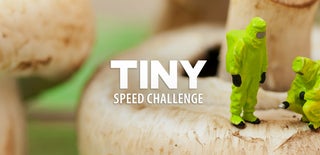Introduction: Written in Sand
There is a tiny world under foot that we crush every day as we move about our world, but with the wreckage we can rebuild.
OK- so dramatic, lighten up. Next we will write a word with little bits of sand using a microscope. I was really surprised how mesmerizing it was to sift through sand under 20x magnification.
I usually like to make something with a purpose or a practical application, but today were working on mental focus and a steady hand under the scope, it was strangely fun.
Supplies
-Sand
-Fine point Tweezers
-Microscope 10x or 20x magnification (Swift SM-80)
-Sewing Pin
-Clear packing Tape and Painters tape
Step 1: Sand and Tweezers
Collect Sand- you don't need much, probably enough inside your shoe from the last beach trip or that bunker we all landed in at the Pebble Beach Links hole #4 (Really! 9 sand traps come on!).
Lay the sand out on some paper, spread it around finding just the little guys, you will be amazed at the variety of sizes available.
Using your fine tip tweezers, shuffle through the the sand refining the previous step into usable grains of sand for the project. This can be done under the scope at 10x power giving a larger field of view vs that of 20x power, a sewing needle comes in handy if the grain wants to stick to the tweezer during placement.
Step 2: Tape
Clear packing tape works best, it has the right amount of stick to hold the little grains in place.
Place the tape face up under the microscope and hold down the edges with more tape. I used painters because it has less tack holding power for later adjustment.
Step 3: Placing the Grains of Sand
With your scope magnification at 10x keep a small pinch of sand in view of the scope and pick the size,color and texture you want to use for your letters.TIP: holding the grain down on the tape you can poke at it with the sewing needle for final spin adjustments.
Step 4: Finish
Do final adjustments, I started with larger grains and tried to get smaller, just for the challenge.
Last photo is comparison to a grain of rice, a US Penny and a sewing needle.
Cheers! thanks for watching.

Participated in the
Tiny Speed Challenge











